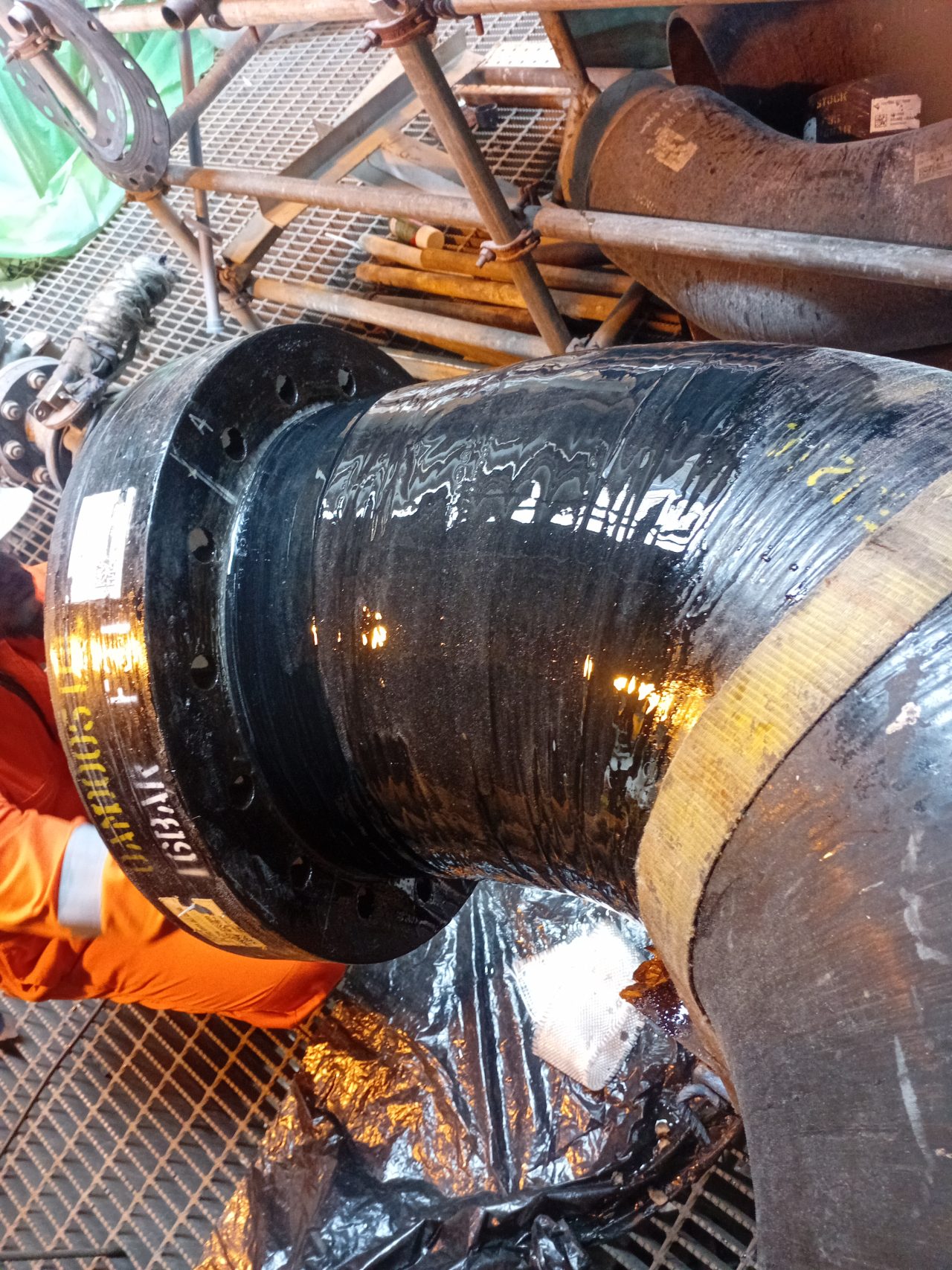The Agbami Floating Production Storage and Offloading vessel (FPSO), commissioned in 2007, is one of Nigeria’s largest deepwater developments. It has a storage capacity of 2.2 million barrels of oil and an initial production capacity of 250,000 barrels per day (KBD).
The vessel is operated by Star Deepwater Petroleum Limited (a Chevron company), in partnership with the Nigerian National Petroleum Company Limited (NNPC) and some others.
Under BOG’s existing contract with Chevron to maintain their Glass Reinforced Epoxy (GRE) pipes, we were awarded the service order to repair the 14” flanged elbow spool on the Ballast System in the Void Forward Space (Portside).
Glass Reinforced Epoxy pipes are a type of composite piping system made from a blend of glass fibres and epoxy resin.
- Glass fibres provide strength, like the steel in reinforced concrete.
- Epoxy resin acts as the glue or binding material, holding the fibres together and giving the pipe its shape and durability.
When combined, they form a strong, lightweight, and corrosion-resistant material that’s ideal for moving fluids in harsh environments. GRE pipes are commonly used in oil and gas, marine, industrial, and water treatment applications, especially where steel pipes would corrode due to contact with saltwater, chemicals, or other aggressive fluids.
14” Flanged Elbow Spool
- 14” (Fourteen Inches) refers to the diameter of the pipe. So, the pipe or fitting has an internal diameter of 14 inches.
- Elbow: An elbow is a pipe fitting used to change the direction of flow, usually by 45° or 90°. Think of it as a bend in the pipeline.
- Flanged: This means the elbow has flanges at its ends; flat, circular rims that allow it to be bolted to another pipe or component. Flanged joints make it easier to assemble, disassemble, and maintain the system.
- Spool: In piping terms, a spool is a pre-assembled section of pipe that includes fittings (like elbows, tees, flanges, etc.) fabricated in the workshop and delivered as a single unit for installation.
So, a 14” flanged elbow spool is a pre-fabricated pipe section, 14 inches in diameter, that includes a curved elbow with flanges for connection to other parts of the system. It helps route fluid flow around obstacles or change direction within the piping network.
Ballast System
A ballast system is used primarily on ships, floating platforms, or FPSOs to maintain stability and balance.
- It consists of tanks (called ballast tanks) located in various parts of the vessel.
- These tanks can be filled with seawater to make the vessel heavier (for stability) or emptied to make it lighter (for manoeuvrability or draft adjustments).
- By controlling which tanks are filled or emptied, the crew can manage the vessel’s trim, list, and draft, ensuring it floats level and stable even under changing load or sea conditions.
The ballast system’s piping includes pumps, valves, and fittings (like the 14” flanged elbow spool) that allow controlled movement of ballast water between tanks or overboard.
The void forward space (or simply forward void) is a compartment located at the front (bow) of a vessel, which is usually empty, hence the term void.
This project is the third intervention on the line, following leaks discovered after completion of the first and second scopes.
To resolve the issue, the project scope covered:
- Replacement of the 14” GRE flange
- Reinforcement of vulnerable spots to prevent the recurrence of failures
The scope was completed in 38 days.
To ensure long-term reliability, BOG has recommended measures to prevent recurrence of earlier failures and safeguard operational integrity.
This project highlights our continued commitment to delivering safe, reliable, and efficient solutions in support of Nigeria’s deepwater production goals.












